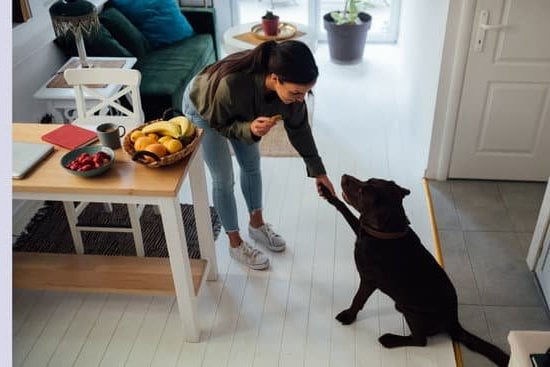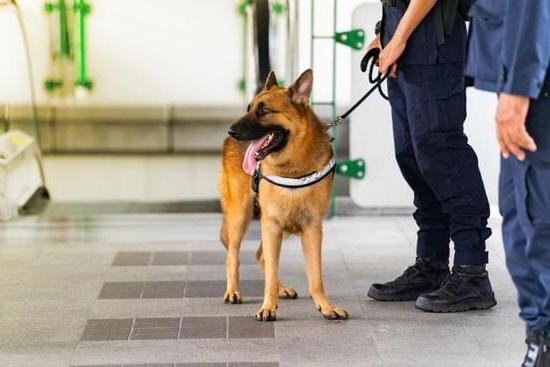In Crate
Many people find the sound of a dog crying in a crate to be an unpleasant experience. It can be quite frustrating when you are trying to crate train your dog and they are vocalizing in the crate. There are a few things that you can do to help reduce the amount of crying that your dog does in the crate.
The first thing that you need to do is make sure that you are providing your dog with enough exercise. A dog that is well-exercised is less likely to be vocal in the crate. Make sure that you are providing your dog with at least 30 minutes of exercise each day.
You also need to make sure that you are providing your dog with enough stimulation. Dogs that are bored are more likely to vocalize in the crate. Make sure that you are providing your dog with plenty of toys and chews to keep them occupied.
If your dog is still vocalizing in the crate, you may need to start working on some basic obedience commands. Once your dog knows how to obey basic commands, you can start using them to calm your dog down in the crate. Some basic commands that you can use to calm your dog down include sit, down, and stay.
If your dog is still vocalizing in the crate, you may need to start using a crate training aid such as a crate mat. A crate mat can help to muffle the sound of your dog crying and can make the experience more pleasant for both you and your dog.
If you are still having trouble with your dog crying in the crate, you may need to consult with a professional dog trainer. A professional dog trainer can help you to troubleshoot the problem and can provide you with additional tips and tricks to help reduce the amount of crying that your dog does in the crate.
Best Dog Crate For Training
There are many factors to consider when choosing the best dog crate for training. The first consideration is size. The crate should be big enough for the dog to stand up, turn around, and lie down in. The next consideration is type. There are three types of crates: wire, plastic, and soft-sided. Wire crates are the most popular type because they are the most versatile. They can be used for housebreaking, traveling, and training. Plastic crates are good for housebreaking and traveling, but are not as versatile as wire crates. Soft-sided crates are good for traveling, but are not as versatile or sturdy as wire crates. The next consideration is features. Some crates come with dividers to create separate areas, while others have doors that can be opened from the top or the side. The final consideration is price. Dog crates vary in price from around $20 to $200.
When choosing the best dog crate for training, size is the most important consideration. The crate should be big enough for the dog to stand up, turn around, and lie down in. The next consideration is type. There are three types of crates: wire, plastic, and soft-sided. Wire crates are the most popular type because they are the most versatile. They can be used for housebreaking, traveling, and training. Plastic crates are good for housebreaking and traveling, but are not as versatile as wire crates. Soft-sided crates are good for traveling, but are not as versatile or sturdy as wire crates. The next consideration is features. Some crates come with dividers to create separate areas, while others have doors that can be opened from the top or the side. The final consideration is price. Dog crates vary in price from around $20 to $200.
The best dog crate for training is a wire crate. It is the most versatile type of crate and can be used for housebreaking, traveling, and training. It is important to choose a wire crate that is big enough for the dog to stand up, turn around, and lie down in. The crate should also have features like dividers or doors that can be opened from the top or the side.
Is It Ok To Not Crate Train Your Dog
?
There are a lot of myths out there about crate training dogs. Some people believe that you should never crate train your dog, while others believe that it is the only way to train a dog. The truth is that crate training can be a very effective way to train your dog, but it is not the only way.
Many people believe that you should never crate train your dog because they will become afraid of being in the crate and will refuse to go in it. This is not always the case. Crate training can be a very effective way to train your dog if you do it correctly. If you start off by putting your dog in the crate for too long or if you use the crate as a punishment, your dog may start to fear the crate. However, if you use the crate as a safe place for your dog to relax in, your dog will likely come to enjoy being in the crate.
Another common belief is that you should never crate train a dog because they will become house trained. This is also not always the case. Crate training can be a very effective way to house train your dog, but it is not the only way. If you crate train your dog and then let them out when they need to go to the bathroom, they will likely start to associate the crate with going to the bathroom and will learn to go to the bathroom in the crate. However, if you do not crate train your dog and let them out when they need to go to the bathroom, they will likely start to go to the bathroom in the house.
The bottom line is that crate training can be a very effective way to train your dog, but it is not the only way. If you are not interested in crate training your dog, there are other ways to train them that will also be effective.
Crate Trained Dog Meaning
A crate-trained dog is one that has been taught to enjoy spending time in a crate. This can be an important skill for dogs, as it can provide them with a safe place to rest and relax when needed. There are a number of benefits to crate training a dog, including:
-Teaching them to enjoy spending time in a crate can help keep them calm and relaxed in a variety of situations.
-It can be a great way to housebreak a dog, as they will learn that the crate is only for going to the bathroom.
-Crate training can be helpful in preventing dogs from chewing on inappropriate items or getting into trouble when left alone.
-It can also be a valuable tool for travel, as it can provide a safe place for dogs to rest in the car or on a plane.
Training Dog Crate
A training dog crate is a valuable tool for all dog owners. Crates can be used to housetrain puppies, to confine misbehaving dogs, and as a resting place for dogs who are recovering from surgery or illness.
There are many different types and sizes of crates available. The most important factor to consider when choosing a crate is the size of your dog. The crate should be large enough for your dog to stand up, turn around, and lie down in.
When using a crate to housetrain a puppy, it is important to place the crate in a location where the puppy can see and hear what is going on in the house. The puppy should also be able to access his food and water bowls. Puppies should not be left in the crate for more than a few hours at a time.
When using a crate to confine a misbehaving dog, it is important to select a crate that is large enough for the dog to stand up and turn around in. The crate should also be placed in a location where the dog can’t see or reach anything he can chew on or destroy. Dogs should not be left in the crate for more than a few hours at a time.
When using a crate as a resting place for a sick or injured dog, it is important to select a crate that is large enough for the dog to lie down in. The crate should also be placed in a location where the dog can’t see or reach anything he can chew on or destroy. Dogs should not be left in the crate for more than a few hours at a time.

Welcome to the blog! I am a professional dog trainer and have been working with dogs for many years. In this blog, I will be discussing various topics related to dog training, including tips, tricks, and advice. I hope you find this information helpful and informative. Thanks for reading!





